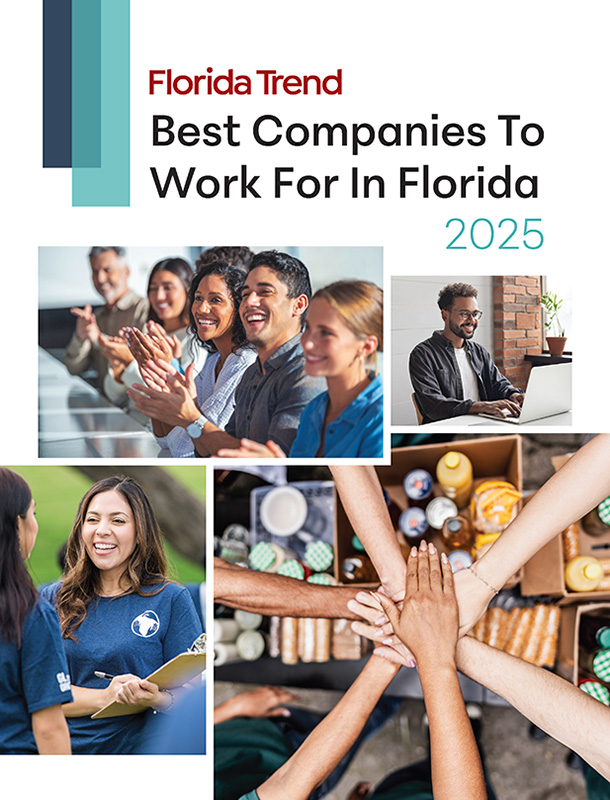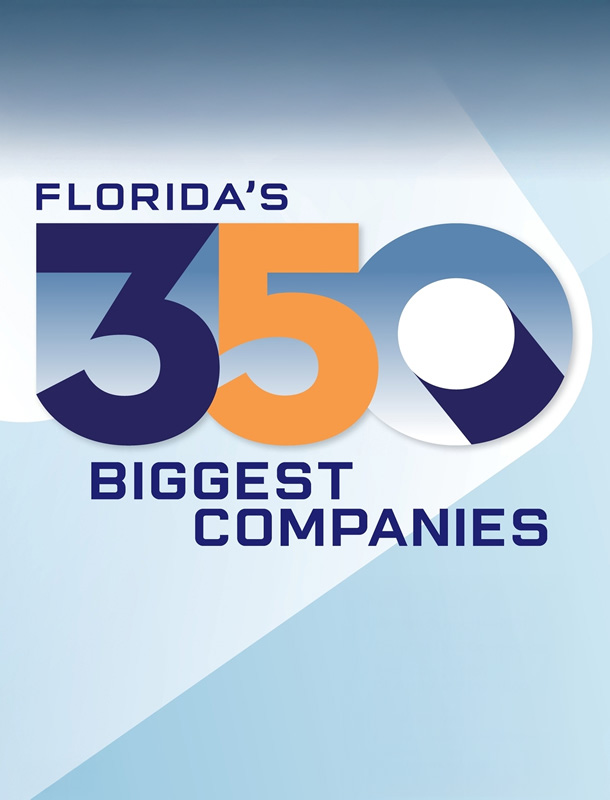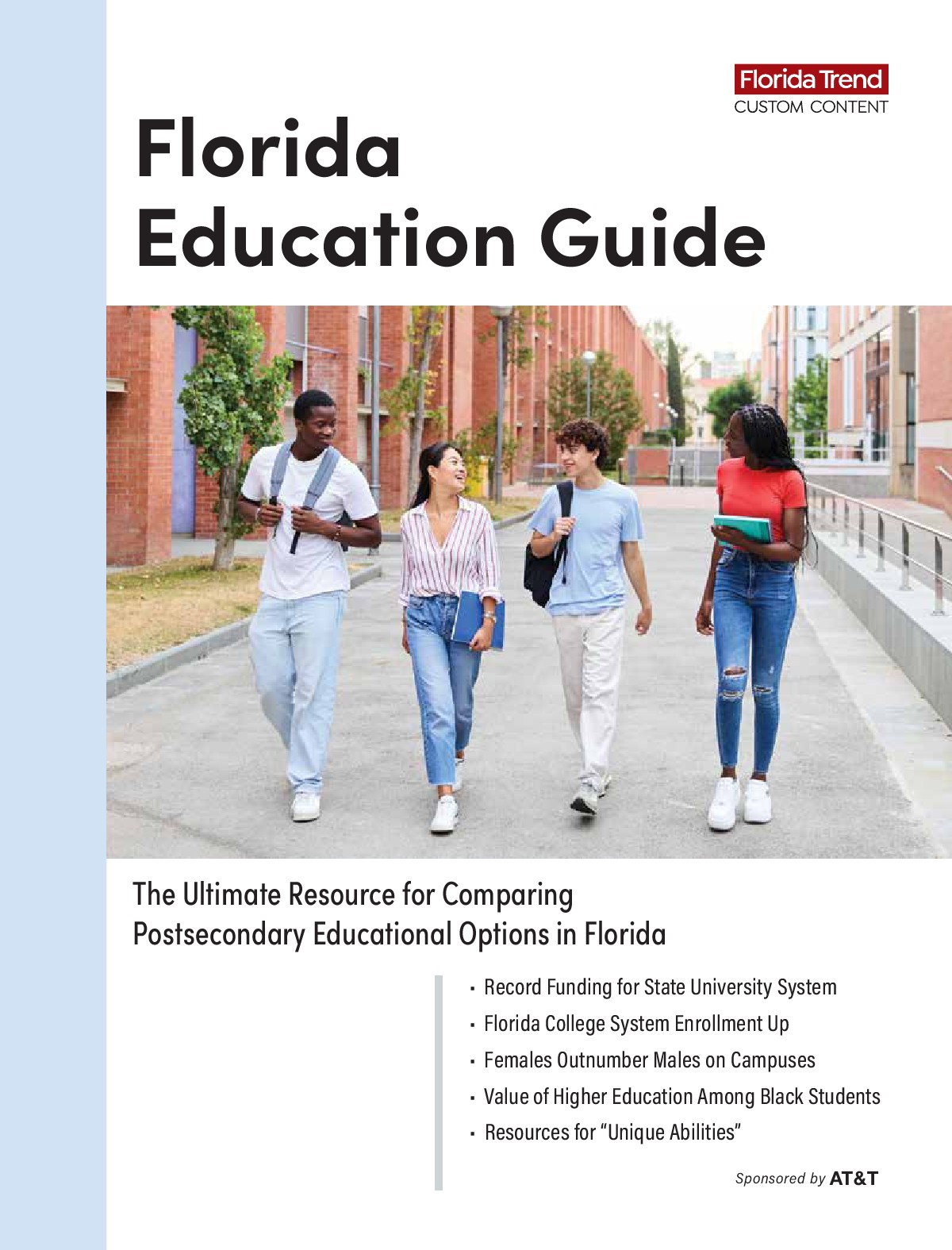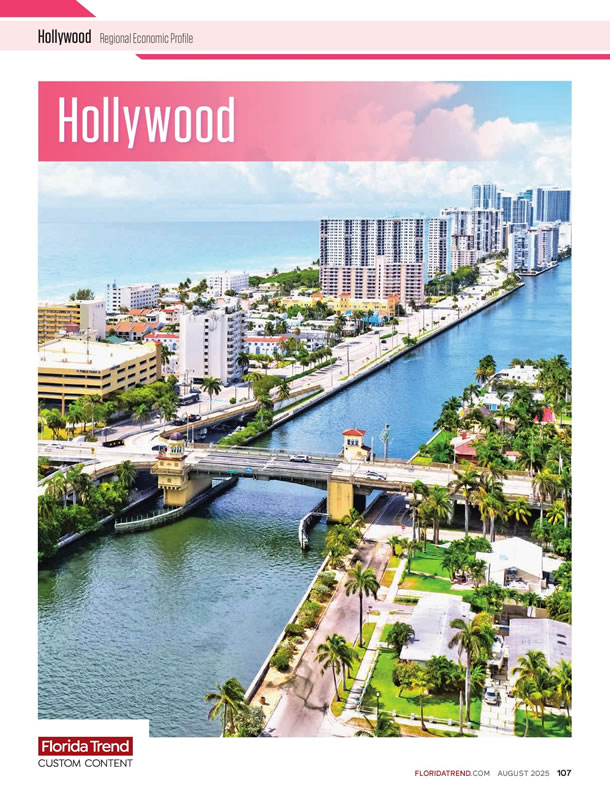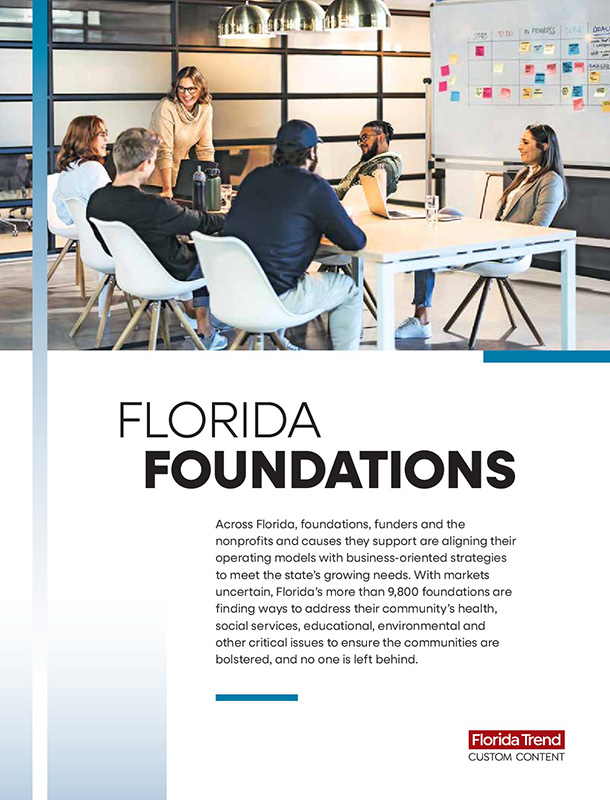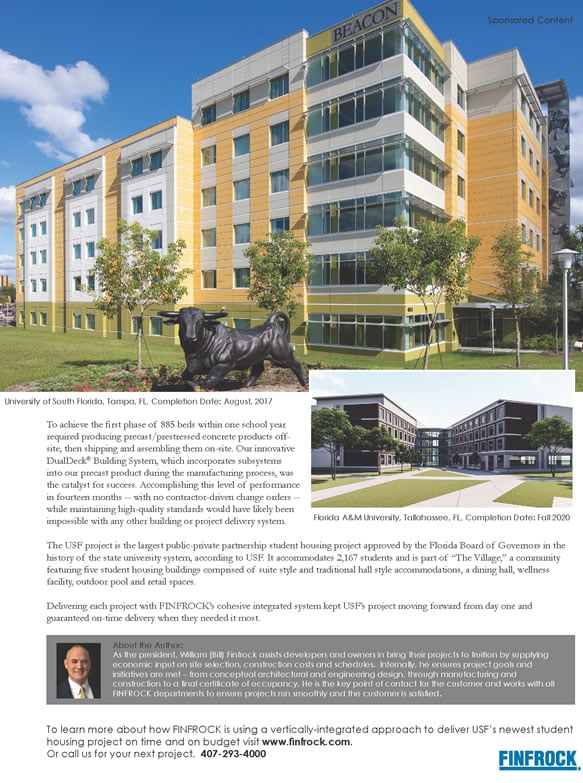The Florida State Seminoles pulled off their greatest upset 34 years ago. But neither legendary football coach Bobby Bowden nor anyone else in the athletics department had anything to do with it.
Florida State outbid the Massachusetts Institute of Technology to become home to the National High Magnetic Field Laboratory. Cambridge, Mass.-based MIT had been home to the lab for decades, and an overwhelming majority of scientists who reviewed the bid packages recommended staying at the elite institution. But Florida State’s bid, backed by state officials’ promise to invest tens of millions of dollars in a facility and its staff, persuaded the National Science Foundation (NSF) that a move to a public university down South was the best decision.
NSF’s choice triggered “shock and disbelief” in Cambridge, remembers Scott Hannahs, then a young researcher at the MIT lab who followed the lab to Tallahassee and today directs its Scientific Instrumentation and Operations section. MIT officials sought a formal review of the decision, the university newspaper reported at the time, expressing concern that the relocation could harm American competitiveness.
Today, “we’re a huge success as a lab,” Hannahs says. “The NSF keeps calling us one of their jewels.”
Literally. NSF renewed its support for the lab late in 2022, pledging an additional $195 million in funding through 2027. And in an interview about the MagLab, this is the first thing NSF Division of Materials Research Director Germano Iannacchione says:
“The MagLab is the crown jewel of the (NSF) Division of Materials Research. NSF has many major facilities. They’re usually quite specialized, and they’re usually tackling the forefronts of astronomy or physics. The MagLab is unique in that it is exploring an entire region of thermodynamics ... You can just feel the excitement that there’s something new being born every day there.”
People marvel at NASA’s Webb Space Telescope for transmitting images of faraway galaxies and helping to unveil the history of the universe in ways we could not see before. So too do the MagLab’s superconducting magnets reveal secrets previously beyond human imagination. It has helped create medical and environmental breakthroughs, new materials that can advance quantum computing and perhaps someday, limitless clean energy.
“We are operating at the edge of what is possible,” says MagLab spokesperson Kristin Roberts.
At the laboratory located southwest of FSU’s campus, staff build the magnets in-house by stacking discs. A coil is fed into the stack and electricity is passed through, creating a magnetic field. They have set numerous records for the strongest magnets in the world.
The lab’s strongest, a 35-ton, 45-tesla magnet, uses liquid helium to operate at −450 degrees Fahrenheit, colder than the surface of Pluto. For context, a typical refrigerator magnet is .01 tesla. Newer MRIs operate at 3 tesla and the FDA has approved models up to 7 tesla.
There is one National High Field Magnetic Lab, but it has three locations. FSU is the mother ship, with satellites at the University of Florida’s McKnight Brain Institute and at the Los Alamos National Laboratory in New Mexico. Los Alamos has a pulse magnet that can exceed 100 tesla for an instant, which Iannacchione says is like mimicking a supernova or a nuclear detonation.
By studying how objects react in electromagnetic fields, scientists can create innovations in materials science or identify a cell’s weaknesses. And high-powered magnets allow for precise breakdowns of elements previously beyond human reach. The discoveries have helped develop magnetic resonance imaging at far greater clarity and could one day reduce the costs dramatically, making MRIs more accessible to poor and rural communities.
Breakthroughs and ambitions
The Magnet Lab is the only national laboratory in Florida. If there is any disappointment about it, it is that the cutting- edge science has not translated into broader economic investment in Tallahassee. An Office of Economic Vitality jointly funded by the city of Tallahassee and Leon County created a magnetics task force five years ago in hopes of building a cluster of businesses around the lab.
Its campaign to nickname the city “the magnetics capital of the world” hasn’t taken off. But it’s a matter of time, says office director Keith Bowers, pointing to the way Silicon Valley naturally developed into a tech hub to be near computer companies and their technological advances. “You’re testing materials. You’re documenting and cataloging the results, and you’ve got a team of scientists working on it. In terms of a research facility, you couldn’t ask for a better location because you can continue to operate in real time instead of having to pack everybody up and pack everything up, (and) ship it over here.”
One major company, Denmark-based Danfoss, just completed a 145,000-sq.-ft. expansion of a plant just down the road from the Magnet Lab at FSU’s Innovation Park to manufacture its oil-free, energy-efficient compressors.
Danfoss has about 300 employees in Tallahassee and is adding 100 more, President Ricardo Schneider says. It’s a mix of scientists and engineers in addition to production and manufacturing workers.
The company could have chosen to set up in Texas, Schneider says. But magnets are key to its Turbocor compressors, so it made sense to be closer to the place advances are made. “This is the largest magnetic ecosystem in the world. Companies that are looking for magnetic science to make things more efficient, to create more businesses — that’s the place to be. To be honest, it’s very hard to be alone here.”
Lab Director Kathleen Amm says she understands and intends to make Tallahassee “a developing tech hub.” Running the lab is a full circle moment for Amm, who started in May after leading the Brookhaven National Laboratory’s magnet division and working 20 years with GE Global Research, including as a physicist in the electromagnetics and superconductivity lab. She completed her Ph.D. at Florida State in 1998, transferring there because of the Magnet Lab.
“I had worked across a broad range of different applications of magnets, everything from generators to MRI, to materials that go into these big magnets to accelerator magnets when I was at Brookhaven,” she says. “So I thought coming here, really I get the whole spectrum. I just love to have that broad impact. I’ve always enjoyed working with the most brilliant engineers and scientists in the world and helping them to be successful.”
The challenges to luring industry may trace back to the lab’s primary mission. The NSF funds it to be a user facility, meaning that each year around 2,000 scientists from across the country and beyond travel to Tallahassee to conduct experiments on the lab’s high-powered magnets. But most go home after that, taking their findings and any resulting advances with them.
Hoping to attract more investment, FSU signed a five-year deal in 2021 with MagCorp, started by a lab employee, to generate “new and dynamic industrial partnerships for the MagLab that are driven by applied science questions.” But FSU quietly ended the agreement earlier this year, saying it generated no such partnerships.
Between the lab and the FSU-Florida A&M University College of Engineering, 500 local scientists work with the lab, collaborating with visiting researchers and conducting their own work, says Stacey Patterson, Florida State’s vice president for research.
Now, Patterson says, FSU plans to seek industry partners on its own through a Business & Industry Solutions section in her office. When new information is discovered, the office will try to be “ready to harvest it and turn it into an economic opportunity for this region and for this state.”
It can take years for a discovery to become a marketable product or application. But a lot of the MagLab’s science is at that stage, she says. And the discoveries continue.
Advances in magnetic resonance imaging offer a clear example, Iannacchione says. “Every advance that has found its way into an MRI clinic can be traced back to the MagLab,” he says.
In energy, the Danfoss Turbocor compressor uses permanent magnets to levitate a rotor while it spins 100,000 times a minute, Schneider says, creating to a friction-free environment in which there’s no performance loss over time. In commercial spaces like hospitals and airports, the compressors can use 30-50% less energy.
The concept of friction-free energy, generating no resistance and no heat, is the antithesis of what we think of when we think of electrical devices, says Lance Cooley, director of the Applied Superconductivity Center at the Magnet Lab and a professor in the FSU-FAMU College of Engineering. Superconducting magnets can crack the code on resistance-free energy that doesn’t get hot, opening the door to developing stronger new materials and “just inconceivable amounts of electricity” flowing through regular copper wiring or transmission lines.
That could lead to windmills strong enough to generate 100 megawatts of energy, or to power ships and aircraft with fans rather than diesel fuel or a turbine engine. “Science is more about asking the right questions,” Cooley says. “If you don’t ask the question, the unknown doesn’t get uncovered.”
As Bowers notes, materials manufacturers might want to be closer to the place advances are made, the way Danfoss did, to help keep pace with new advances.
The brass ring — the advance that can realize every grand ambition about the lab’s potential — is in fusion energy. In nuclear fusion, two light atoms are smashed together to form a heavier one, generating a burst of energy. It’s the energy that powers stars, including our sun, and — if it could be replicated on Earth, scientists say — it promises an endless supply of clean energy.
A 2021 experiment by Commonwealth Fusion Systems and MIT is considered a breakthrough in proving fusion energy can be realized, attracting billions of dollars in investments from people like Jeff Bezos and Bill Gates.
“You can’t do fusion without magnet technology,” Patterson says. “The MagLab, what we have here in Tallahassee and here in Florida, will play a critical role in the future of energy production for this country and really the world.”
At a minimum, Florida could develop quality control and testing facilities for emerging energy technology, Cooley says.
Harvesting opportunity
For many of the research staff, however, the lab’s core mission is more exciting and satisfying than casting about for economic spinoffs.
“We are a fundamental science lab. We are not interested in making a product,” says Thierry Dubroca, a 10-year lab researcher. “We’re interested in understanding fundamental questions” about molecular interactions, and that understanding can help an engineer or a company figure out how to apply it.
Each day can be different — “I don’t like to do the same thing twice,” Dubroca says. Visiting scientists arrive having exhausted the routine experiments they can do in their home laboratories where magnet strength might top out at 7 tesla. Some are technically proficient and need little assistance. Others have no idea how to do a measurement. While MagLab research staff may know nothing about their research, “we know everything about how to measure it. We do the experiment and set up the instrumentation. We advise them how to prepare the sample so it can be read by our machine,” Dubroca says.
“We’re a user facility, and having those scientists come, do world-class science and then be able to publish it and see the recognition in your field is the name of the game,” Hannahs says.
If the lab has struggled to attract industry attention, the facility has become a point of pride for many in Tallahassee, Hannahs says. When it was at MIT, it was one among many national laboratories, tucked into a small, out-of-the-way building. Florida State carved out a chunk of land southwest of the main campus, closer to Tallahassee International Airport.
An annual open house draws 10,000 people in a single day.
Florida’s bid was “on a scale that MIT hadn’t thought of for the upgrades,” Hannahs says. Massachusetts budgets were tighter in the early 1990s, which likely affected that thinking.
“We’ve become a world-class magnet lab. We have more users and do more science and publications,” Hannahs says. “It really is pure science.”
The lab can stay true to that mission while attracting more investment, FSU officials say. Both the NSF and visiting scientists give the lab high marks for delivering on its charge.
“We really want to make sure that such a valuable facility is as equitably available to researchers around the country. It’s really easy for some deep pockets to come in and just take over the place,” Iannacchione says. “Science can come from anywhere. You can be in North Dakota in a small department, and you can come up with a really interesting question. We want to make sure that there’s at least a pathway to take that really wonderful science question and come down to the MagLab or any of our other facilities and be able to test your ideas.”
He hears from scientists who have conducted experiments there. “They wish the MagLab was twice as big. That there was twice as many instruments, twice as many technicians and scientists there to help them out,” Iannacchione says. “I’ve never heard a negative comment about their experience once they’re there. And they will now gladly wait in line for the chance to go back and do some more measurements there.”
Demand for lab time is heavy. Because of the electricity needed to power the high field magnets, often only two can operate at a time. With 2,000 visiting scientists, that means the lab operates 22 hours per day in two shifts.
NSF welcomes the idea of mixing the lab’s fundamental science with commerce, Amm says. But it often takes years between new discoveries and a product ready for manufacture or sale.
“Some of the work that’s being done to study fundamental materials here could eventually lead to a superconductor that operates at room temperature. You never know what can happen,” she says. “... It’s a world-changing thing. And the fundamental research that’s being done here could potentially enable that.”
And the cupboard is not bare, Patterson says. FSU just won a grant to build an aerospace and manufacturing institute in Panama City that will use findings from the MagLab. And the university is starting a new materials science and engineering department “because of some of the work that is made possible because of the MagLab. That will bring in more talent.”
Her goal is to ensure that new knowledge from the MagLab can be harvested and turned into regional economic opportunity.
“The opportunities that the MagLab makes possible for Florida State and for Florida are really enormous,” Patterson says. “And we don’t even know what they are. That’s the beauty of innovation and commercialization. We’re learning as we go. That’s why it’s research. We’re bringing new knowledge to the table.”
MASS ENERGY
- Available power supply: 56 megawatts
- Annual electricity cost to power the lab’s water-cooled magnets: $2.5 million
- Average monthly electric use: 5 million kWh
- Percentage of the City of Tallahassee electricity used: 8%



